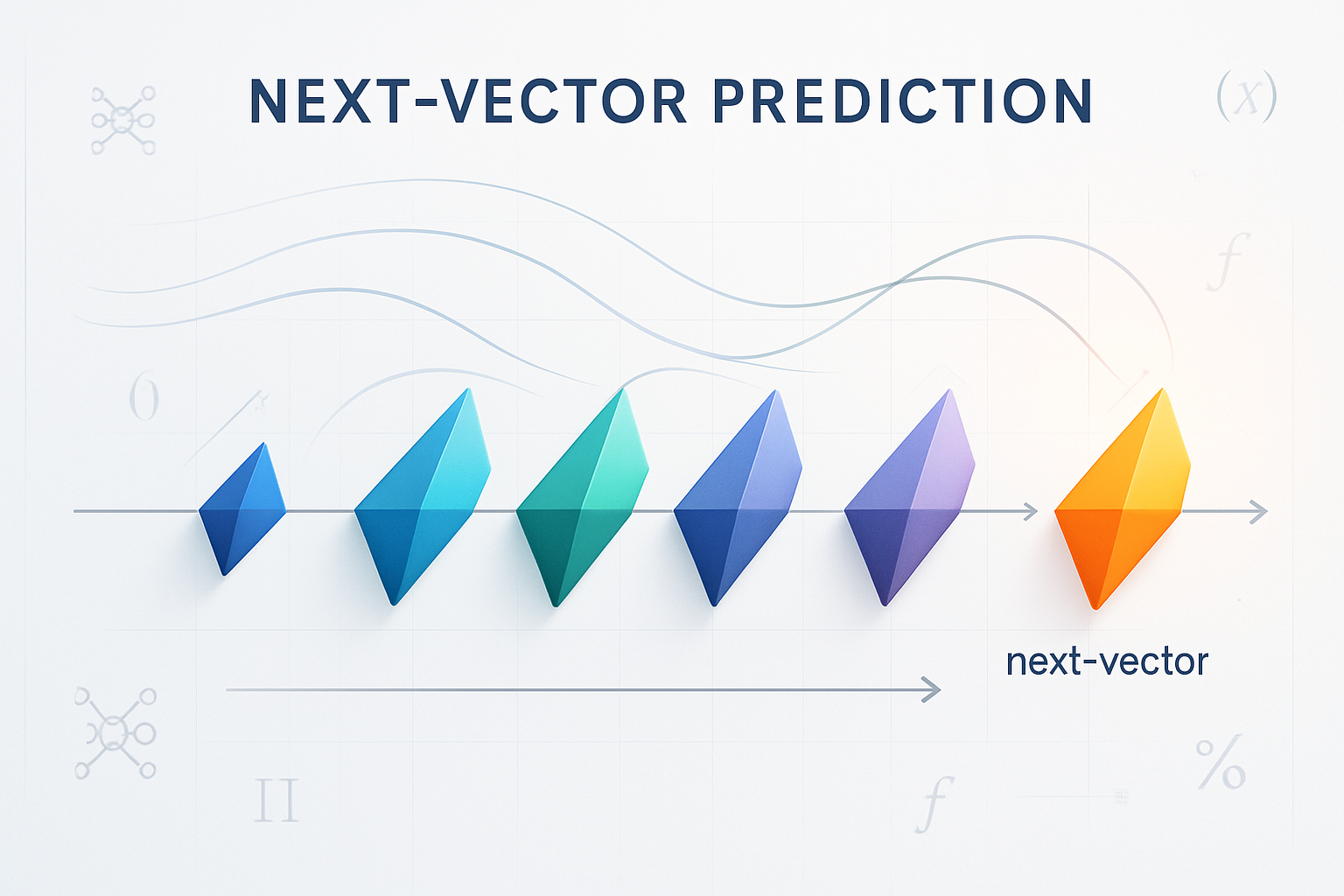TL;DR
Researchers from Sapient Intelligence and Tsinghua University have developed the Hierarchical Reasoning Model (HRM), a revolutionary brain-inspired AI architecture that fundamentally challenges how we think about machine reasoning. Unlike traditional large language models that rely on brittle Chain-of-Thought (CoT) prompting, HRM uses a dual-module system mimicking the brain’s hierarchical processing—a slow, abstract “high-level” module for planning and a fast “low-level” module for detailed computations.
The results are staggering: With just 27 million parameters and only 1,000 training examples per task, HRM achieves near-perfect performance on complex reasoning problems where state-of-the-art models completely fail. On the ARC-AGI benchmark (considered a key test for artificial general intelligence), HRM scored 40.3%—substantially outperforming much larger models like o3-mini-high (34.5%) and Claude 3.7 (21.2%).
The model solves extremely difficult Sudoku puzzles and navigates complex mazes with remarkable efficiency, all without pre-training or CoT supervision.
Why this matters: HRM represents a paradigm shift from shallow, token-based reasoning to deep, latent computation that mirrors biological intelligence. It’s computationally universal (Turing-complete) and demonstrates that hierarchical, multi-timescale processing—not just scale—is the key to breakthrough AI reasoning capabilities.
The Shallow Depth Problem: Why Current AI Hits a Wall
The irony of “deep learning” is that despite its name, modern AI architectures are paradoxically shallow. This isn’t just a semantic quibble—it’s a fundamental computational limitation that constrains the most coveted capability in artificial intelligence: reasoning.
Consider the Transformer architecture that powers today’s most advanced language models. Despite their impressive performance across numerous tasks, these models operate within fixed computational complexity classes like AC⁰ or TC⁰, which mathematically prevents them from solving problems requiring polynomial time.
They’re not Turing-complete, meaning they cannot execute the kind of complex algorithmic reasoning necessary for deliberate planning or symbolic manipulation—at least not in a purely end-to-end manner.
The researchers demonstrate this limitation empirically through Sudoku experiments. Even when scaling Transformer depth dramatically, performance plateaus far below optimal levels. Simply stacking more layers doesn’t unlock deeper reasoning—it just creates training instability and vanishing gradients without proportional gains in problem-solving capability.
This architectural constraint has forced the AI community to rely heavily on Chain-of-Thought (CoT) prompting as a compensatory mechanism. CoT externalizes reasoning into token-level language, breaking complex tasks into sequential intermediate steps. But here’s the critical insight: CoT is a crutch, not a solution.

The Brittleness of Chain-of-Thought
CoT reasoning suffers from several fundamental weaknesses that make it unsuitable for robust, general-purpose reasoning:
Brittle decomposition: CoT relies on human-defined task breakdowns where a single misstep can derail the entire reasoning process. The dependency on explicit linguistic steps tethers reasoning to patterns at the token level, creating fragile reasoning chains.
Data hunger: CoT methods require extensive training data to perform well, making them inefficient for novel problem domains.
Latency issues: Generating lengthy reasoning sequences token-by-token creates significant response delays, especially for complex problems.
Shallow computation: Despite generating many tokens, the underlying computation remains fundamentally shallow—each token is processed through the same fixed-depth network.
The authors argue convincingly that language is a tool for communication, not the substrate of thought itself. The human brain sustains lengthy, coherent reasoning with remarkable efficiency in a latent space, without constant translation back to language. This biological insight points toward a fundamentally different approach to machine reasoning.
The Brain’s Blueprint: Hierarchical Multi-Timescale Processing
The human brain provides a compelling architectural template that contemporary AI models lack. Rather than processing information through uniform, fixed-depth networks, the brain organizes computation hierarchically across cortical regions operating at different timescales.
This hierarchical organization enables deep, multi-stage reasoning through several key principles:
Temporal separation: Different brain regions operate at distinct intrinsic timescales, reflected in neural rhythms ranging from slow theta waves (4-8 Hz) to fast gamma waves (30-100 Hz). This separation allows stable, high-level guidance of rapid, low-level computations.
Recurrent refinement: Extensive feedback loops iteratively refine internal representations, allowing higher-level areas to guide subordinate processing while preserving global coherence.
Efficient credit assignment: Crucially, the brain achieves this computational depth without the prohibitive credit-assignment costs that typically hamper recurrent networks trained with backpropagation through time (BPTT).
The researchers drew inspiration from these biological principles to design an architecture that could achieve the effective computational depth that contemporary models lack, while maintaining training stability and efficiency.

HRM Architecture: Two Minds, One System
The Hierarchical Reasoning Model implements a elegant dual-module architecture that mirrors the brain’s hierarchical organization:
The High-Level Module: The Strategic Planner
The H-module serves as the system’s strategic coordinator, responsible for abstract, deliberate reasoning and global planning. Operating at a slower timescale, it updates its state only once per computational cycle—after the low-level module has completed multiple processing steps.
This design ensures that the H-module provides stable, consistent guidance throughout each reasoning phase. Think of it as the “executive function” that maintains the overall problem-solving strategy while subordinate systems handle detailed computations.
The Low-Level Module: The Rapid Executor
The L-module handles fast, detailed computations and local problem-solving. It iteratively updates its state multiple times within each high-level cycle, converging to a local equilibrium before the H-module advances to the next strategic phase.
This rapid processing allows the system to perform intensive search, backtracking, and refinement operations under the fixed guidance of the current high-level strategy.
Hierarchical Convergence: The Secret Sauce
The key innovation that prevents premature convergence—the bane of traditional recurrent networks—is what the researchers term “hierarchical convergence.”
In standard RNNs, convergence is problematic because as the hidden state settles toward a fixed point, update magnitudes shrink, effectively stalling computation and capping the network’s effective depth. HRM elegantly sidesteps this issue through its dual-module design.
During each cycle, the L-module converges to a local equilibrium under the fixed guidance of the H-module’s current state. Once this local computation completes, the H-module incorporates the results and updates its own state, providing fresh context that essentially “restarts” the L-module’s computational path toward a new equilibrium.
This process enables HRM to perform a sequence of distinct, stable, nested computations with an effective depth of N × T steps (where N is the number of high-level cycles and T is the number of low-level steps per cycle), dramatically exceeding the computational depth of standard architectures.
One-Step Gradient Approximation: Biological Plausibility Meets Efficiency
Traditional recurrent models rely on BPTT, which requires storing hidden states from the entire forward pass and has O(T) memory complexity for T timesteps. This creates severe memory bottlenecks and is biologically implausible—the brain is unlikely to implement such a mechanism.
HRM employs a one-step gradient approximation inspired by Deep Equilibrium Models (DEQ) that treats intermediate states as constants and computes gradients only at the final state of each module. This approach:
- Reduces memory requirements to O(1) instead of O(T)
- Eliminates the need for BPTT unrolling
- Aligns with biological plausibility through local learning rules
- Maintains training stability while enabling deep computation
The mathematical foundation rests on the Implicit Function Theorem, which allows gradient computation at fixed points without explicit backpropagation through the entire sequence.
Adaptive Computation: Thinking Fast and Slow
Inspired by Daniel Kahneman’s dual-process theory and neuroscientific evidence of dynamic cognitive resource allocation, HRM incorporates an Adaptive Computation Time (ACT) mechanism that enables context-sensitive reasoning depth.
The system uses Q-learning to predict whether to halt computation or continue based on the current state of the H-module. This creates a dynamic balance between efficiency and accuracy:
- Simple problems receive minimal computational resources, saving processing time
- Complex problems automatically trigger deeper reasoning when needed
- Inference-time scaling allows models to improve performance by simply increasing computational limits without retraining
The ACT mechanism demonstrates remarkable efficiency—maintaining low average computational steps while preserving the ability to scale up for challenging problems. Models trained with specific computational limits can generalize to higher limits during inference, showing continued accuracy improvements.

Experimental Validation: David vs. Goliath Performance
The researchers evaluated HRM on three challenging benchmarks designed to test different aspects of reasoning capability:
ARC-AGI: The AGI Litmus Test
The Abstraction and Reasoning Corpus evaluates general fluid intelligence through IQ-test-like puzzles requiring inductive reasoning. Each task provides just 2-3 input-output example pairs, forcing AI systems to extract and generalize abstract rules.
HRM’s performance: 40.3% on ARC-AGI-2 with only 27M parameters and 1,000 training examples
Baseline comparisons:
- o3-mini-high: 34.5% (much larger model)
- Claude 3.7 8K: 21.2% (significantly longer context)
- Direct prediction baseline: ~18% (same architecture without hierarchical design)
This represents more than a twofold improvement over comparable non-hierarchical architectures and outperforms much larger, more resource-intensive models.
Sudoku-Extreme: Beyond Human-Level Difficulty
Standard Sudoku datasets used in research can be solved with elementary techniques. The researchers created Sudoku-Extreme, featuring puzzles that average 22 search backtracks compared to 0.45 for existing datasets—making them exceptionally challenging even for human experts.
HRM’s performance: Near-perfect accuracy on complex puzzles requiring extensive tree-search and backtracking
Baseline performance: State-of-the-art CoT models achieved 0% accuracy—complete failure on these challenging reasoning problems.
The visualization of HRM’s intermediate steps reveals a sophisticated depth-first search strategy, exploring potential solutions and backtracking when hitting dead ends—remarkably similar to human problem-solving approaches.
Maze-Hard: Optimal Pathfinding
The maze navigation task requires finding optimal paths in 30×30 grids, filtered to retain only instances with difficulty exceeding 110 (based on shortest path length).
HRM’s performance: Consistently finds optimal paths with high accuracy
Baseline comparison: A 175M parameter Transformer trained on 1 million examples achieved less than 20% accuracy using pass@64 evaluation.
The Neuroscience Connection: Emergent Brain-Like Organization
One of the most fascinating aspects of HRM is how it spontaneously develops brain-like organizational principles during training. The researchers discovered that trained HRM models exhibit a dimensionality hierarchy that mirrors biological neural organization.
Participation Ratio Analysis
Using the Participation Ratio (PR)—a standard measure of effective dimensionality in neuroscience—the researchers found:
High-level module (H): PR = 89.95 (high-dimensional, flexible representations)
Low-level module (L): PR = 30.22 (lower-dimensional, specialized processing)
This 2.98 ratio closely matches the ~2.25 ratio observed in mouse cortex, where higher-order areas exhibit greater representational dimensionality than lower-level sensory regions.
Emergent, Not Engineered
Critically, this hierarchical organization is emergent—it arises through training rather than being explicitly programmed. Control experiments with untrained networks show no such separation, confirming that the dimensionality hierarchy develops as the model learns complex reasoning tasks.
This biological correspondence suggests HRM has discovered a fundamental organizational principle crucial for flexible, robust reasoning—the same principle that enables the remarkable cognitive capabilities of biological brains.
Implications: Toward Universal Computation
HRM represents more than just another AI architecture—it’s a paradigm shift with profound implications for the future of artificial intelligence:
Computational Universality
Unlike fixed-depth Transformers, HRM is Turing-complete, capable of simulating any Turing machine given sufficient time and memory. This theoretical universality, combined with practical training efficiency, moves us closer to truly general-purpose reasoning systems.
Data Efficiency Revolution
The ability to achieve breakthrough performance with just 1,000 training examples per task represents a fundamental advance in sample efficiency. This could democratize AI development by reducing the massive data requirements that currently limit access to advanced reasoning capabilities.
Beyond Token-Level Reasoning
By conducting computation in latent space rather than through explicit linguistic steps, HRM points toward more efficient and robust reasoning mechanisms that don’t suffer from the brittleness of token-level approaches.
Biological Plausibility
The alignment with neuroscientific principles and the emergence of brain-like organizational structures suggest that HRM captures fundamental aspects of how intelligence actually works—not just how we can engineer systems to appear intelligent.
Challenges and Future Directions
While HRM represents a significant breakthrough, several important questions and challenges remain:
Scalability Questions
Current experiments focus on relatively small models (27M parameters). How will the hierarchical architecture scale to larger parameter counts and more complex reasoning domains?
Interpretability Opportunities
The hierarchical structure and intermediate state visualizations offer promising avenues for understanding how the model actually solves problems—a significant advantage over black-box approaches.
Integration Challenges
How can HRM’s principles be integrated with existing large language model architectures and training pipelines? The one-step gradient approximation and hierarchical convergence mechanisms may require significant infrastructure adaptations.
Generalization Limits
While HRM excels on the tested benchmarks, broader evaluation across diverse reasoning domains will be crucial for establishing its general applicability.
The Broader Context: A New Chapter in AI Reasoning
HRM emerges at a critical juncture in AI development. As the limitations of scaling traditional architectures become increasingly apparent, the field is actively seeking new paradigms that can unlock more sophisticated reasoning capabilities.
Beyond the Scaling Paradigm
The success of HRM with relatively small parameter counts challenges the prevailing assumption that bigger is always better. Instead, it suggests that architectural innovation—particularly bio-inspired design principles—may be more important than raw scale for achieving reasoning breakthroughs.
The Return to Biological Inspiration
After years of focusing primarily on engineering solutions, HRM demonstrates the continued value of looking to biology for architectural insights. The brain’s 4-billion-year evolutionary optimization for intelligence remains an unmatched source of design principles.
Implications for AGI Development
The combination of Turing-completeness, sample efficiency, and emergent brain-like organization positions HRM as a significant step toward artificial general intelligence. While we’re still far from human-level reasoning across all domains, HRM provides a concrete architectural pathway that addresses fundamental limitations of current approaches.
Conclusion: The Dawn of Hierarchical AI
The Hierarchical Reasoning Model represents a watershed moment in AI reasoning research. By drawing inspiration from the brain’s hierarchical, multi-timescale processing architecture, the researchers have created a system that fundamentally transcends the limitations of current approaches.
The implications extend far beyond the impressive benchmark results. HRM demonstrates that:
- Depth matters more than width for complex reasoning tasks
- Biological principles remain highly relevant for AI architecture design
- Hierarchical organization can emerge naturally from appropriate training objectives
- Sample efficiency and computational universality are achievable simultaneously
Perhaps most importantly, HRM provides a concrete alternative to the Chain-of-Thought paradigm that has dominated recent reasoning research. Instead of externalizing reasoning into brittle token sequences, HRM shows how to achieve robust, efficient reasoning through internal hierarchical computation.
As we stand at the threshold of potentially transformative advances in artificial intelligence, HRM offers both a promising technical direction and a reminder that the most profound innovations often come from understanding and emulating the principles that have already been perfected by evolution. The brain’s blueprint for intelligence, refined over millions of years, continues to provide the most compelling roadmap for creating truly intelligent machines.
The hierarchical reasoning revolution has begun—and it’s pointing us toward a future where artificial intelligence doesn’t just mimic human reasoning, but embodies the fundamental computational principles that make intelligence possible in the first place.










